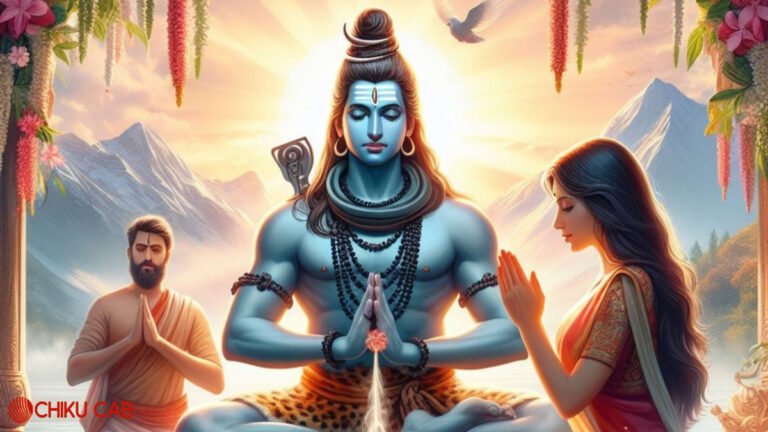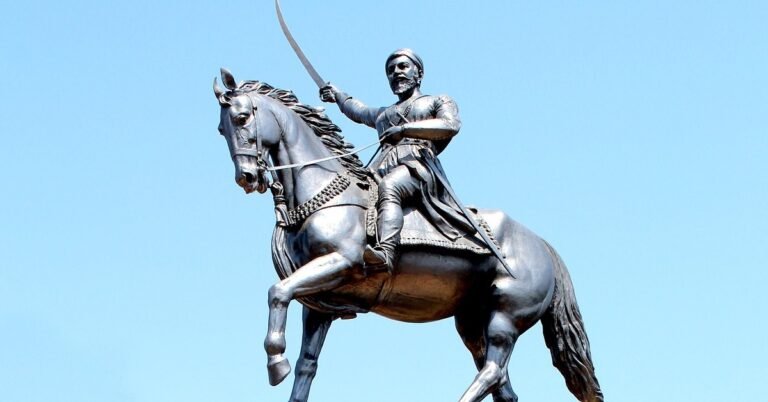Lord Rama’s Journey from Panchavati to Kishkindha and Beyond
The epic tale of Lord Rama, as narrated in the Ramayana, is filled with trials, devotion, and alliances that shaped his quest to rescue Goddess Sita. After the tragic kidnapping of Sita by Ravana in Panchavati, Rama and Lakshmana embarked on a determined journey through forests, ashrams, and kingdoms, gathering allies and divine guidance along the way. This journey ultimately led them to Kishkindha, where they formed crucial alliances, and then to Rameshwaram, where they prepared for the great war against Ravana.
—
The Search for Sita Begins
1. The Tragic Event at Panchavati
Panchavati, located near Nashik, Maharashtra, was where Rama, Lakshmana, and Sita resided during their exile. It was here that Lakshmana chopped off Surpanakha’s nose, enraging her brother, the demon king Ravana. Seeking revenge, Ravana deceived Sita by sending his uncle Mareech in the form of a golden deer. When Sita insisted on capturing the deer, Rama went after it, leaving Lakshmana to guard her. Taking advantage of the situation, Ravana abducted Sita, killing Jatayu, the noble vulture king who attempted to rescue her.
Heartbroken and determined, Rama and Lakshmana set out to find Sita, seeking guidance from sages and celestial beings.
2. Meeting Kabandha and Receiving Guidance
As they wandered in search of Sita, the brothers reached Kabandha Ashram, located near Ramdurg in Karnataka. Kabandha, a celestial being cursed into a demon’s form, blocked their path. After a fierce battle, Rama and Lakshmana killed Kabandha and freed him from his curse. In gratitude, Kabandha advised them to seek the help of Sugriva, the exiled monkey king of Kishkindha, who could aid them in finding Sita.
—
The Journey to Kishkindha
3. The Devotion of Shabari
Following Kabandha’s guidance, Rama and Lakshmana arrived at Shabari Ashram, where they met Shabari, a devoted disciple of Sage Matanga. She welcomed them with great reverence and offered them berries after tasting them first, ensuring they were sweet.
This act of devotion deeply moved Lord Rama, who blessed Shabari before departing. Before they left, she instructed them to seek Sugriva’s help in their search for Sita.
4. Meeting Hanuman and Sugriva
Following Shabari’s advice, Rama and Lakshmana traveled to Kishkindha (modern-day Karnataka), the kingdom of the Vanaras (monkey clan). Here, they encountered Hanuman, a devoted follower of Lord Rama. Hanuman, recognizing their divine presence, carried them on his shoulders to meet Sugriva, the exiled king of Kishkindha.
Sugriva, having been betrayed by his brother Vali, sought Rama’s help in reclaiming his throne. In exchange, he promised to help Rama find Sita. Rama fulfilled his promise by defeating Vali, allowing Sugriva to regain his kingdom.
Sugriva then sent his Vanara army in all directions to search for Sita.
—
Monsoon Retreat and Hanuman’s Mission
5. Waiting Out the Monsoon in Bellary
As the monsoon season arrived, Rama and Lakshmana stayed in Bellary, Karnataka, awaiting news from Sugriva’s search parties.
It was here that Hanuman returned with crucial information—he had found Sita in Lanka after leaping across the ocean. Hanuman described her plight and reassured her that Rama would soon come to rescue her.
—
Preparing for the War Against Ravana
6. Worship and Penance at Trichy
With newfound determination, Rama and Lakshmana continued their journey southward, reaching Tiruchirappalli (Trichy), Tamil Nadu. Here, Rama worshipped Lord Shiva and performed penance for slaying the demons Khara and Dooshana, whom he had killed earlier in Dandakaranya.
7. Arrival at Rameshwaram and Building the Bridge to Lanka
The journey then took them through Rampath and Ramanathapuram, finally reaching Rameshwaram, the southernmost point before Lanka.
Here, Rama worshipped Lord Shiva again, seeking blessings for the upcoming battle. With the help of Hanuman, Sugriva, and the Vanara army, Rama planned the construction of Ram Setu (Adam’s Bridge), a massive stone bridge that would enable them to cross the ocean to Lanka.
—
Conclusion
Lord Rama’s journey from Panchavati to Rameshwaram was not just a physical expedition, but a spiritual and emotional transformation. Through divine guidance, unwavering faith, and the support of devoted allies like Hanuman and Sugriva, Rama moved closer to fulfilling his mission of rescuing Sita and upholding dharma.
This epic tale continues to inspire devotees, emphasizing the values of loyalty, courage, and righteousness.
—
References
1. Valmiki Ramayana – Original Sanskrit epic
2. Kamba Ramayanam – Tamil version of the Ramayana
3. Tulsidas’ Ramcharitmanas – A devotional retelling of the Ramayana in Hindi
4. Historical references to places associated with Rama’s journey (e.g., Nashik, Kishkindha, Rameshwaram)
—
Disclaimer
This article is based on Hindu scriptures, legends, and historical references. While many locations are linked to Rama’s journey, some places and events remain open to interpretation. The content is meant for educational and devotional purposes.








